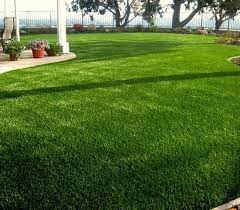Revitalise Your Outdoor Space: A Complete Guide to Replacing Artificial Grass
Unlock the secret to a perpetually pristine lawn with our comprehensive guide—transform your space with ease and confidence, ensuring lasting beauty and durability.
Are you dreaming of transforming your outdoor space into a verdant sanctuary that remains lush and vibrant through all seasons without the constant demands of mowing, watering and battling weeds? The allure of a maintenance-free, evergreen lawn is within reach when you consider the switch from natural to artificial grass. This strategic choice not only elevates the aesthetic appeal of your property but also liberates you from the time-consuming chores that traditional lawns require.
Thinking how to replace artificial grass? Embarking on the path to replacing your natural lawn with artificial grass opens up a realm of possibilities for enjoying your outdoor areas to their fullest potential. Whether you’re looking to create a safe play area for children, a pet-friendly zone or simply a picturesque backdrop for relaxation and entertaining, artificial grass provides a versatile, durable solution that caters to a wide range of needs.

This comprehensive guide is designed to navigate you through every step of how to replace your lawn with artificial grass, from the initial planning stages to the finishing touches that complete the transformation. You’ll discover how to prepare your existing lawn for removal, select the ideal artificial turf for your space, and execute a flawless installation that ensures your new lawn is as functional as it is beautiful.
Moreover, the guide cover essential post-installation care tips to maintain the pristine condition of your artificial grass, ensuring it remains a highlight of your outdoor space for years to come.
By replacing your natural lawn with artificial grass, you’re not just making a cosmetic upgrade; you’re investing in a sustainable, low-maintenance alternative that saves water, eliminates the need for harmful chemicals and provides a year-round green space with minimal environmental impact.
Whether you’re a DIY enthusiast ready to take on this rewarding project or you’re considering the expertise of professional installers, this guide offers the insights and step-by-step instructions needed to achieve a seamless transition to a stunning, low-maintenance yard that meets your lifestyle and aesthetic preferences.
Let’s dive into the process of transforming your lawn, ensuring you’re well-equipped to make your vision of the perfect artificial grass landscape a reality.
Planning and Preparation for Your Artificial Grass Project
Transitioning to an artificial lawn requires thoughtful planning and preparation. This stage sets the foundation for the entire project, ensuring that the outcome meets your expectations for aesthetics, functionality and durability. Here’s how to approach this critical phase:
- Assess Your Current Lawn:
Begin by taking a comprehensive look at your current lawn. Consider the following:
- Size and Shape: Measure the dimensions of your lawn to calculate the square footage. This will be essential in ordering the correct amount of artificial turf. Remember to account for any irregular shapes or unique features that might influence the installation process.
- Condition: Note the condition of your current lawn and soil. Are there areas prone to pooling water or spots that are particularly uneven? Identifying these issues early on can help you address them during the base preparation phase, ensuring a stable foundation for your artificial grass.
- Usage: Reflect on how you use your lawn. Do you need a space that’s pet-friendly, suitable for children’s play or primarily for aesthetic purposes? Understanding this will guide you in choosing the right type of artificial grass and making any necessary modifications to the design.
- Choose High-Quality Artificial Grass:
Selecting the right artificial grass is pivotal to the project’s success. Consider these key factors:
- Pile Height: The height of the grass blades can significantly impact the look and feel of your lawn. Taller piles create a lush, luxurious feel but may require more infill to maintain their shape. Shorter piles are often more durable and suitable for high-traffic areas.
- Density: The density or stitch rate of the turf affects both its appearance and durability. Higher-density grasses offer a fuller look and are better suited to withstand frequent use, making them ideal for areas like playgrounds or pet zones.
- Colour: Artificial grass comes in various shades of green and even multi-tonal options that mimic the look of natural grass more closely. Consider your local environment and the level of realism you desire. Some might prefer a vibrant green, while others may opt for a more natural, varied appearance.
- Material and Quality: Ensure the turf is made from high-quality, durable materials designed to withstand UV exposure, foot traffic, and weather conditions. Quality turf not only looks better but also lasts longer, making it a wise investment.
Final Thoughts on Planning and Preparation
Taking the time to assess your lawn and choose the right artificial grass thoroughly will streamline the installation process and lead to more satisfying results. This preparatory work is about envisioning the space you want to create and laying the groundwork for a transformation that will bring joy and utility to your outdoor living area for years to come.
Steps to Replace Your Lawn With Artificial Grass
- Remove the Existing Lawn: Begin your lawn transformation by removing all existing grass and organic material from the area. A sod cutter is highly recommended for this task as it allows for quick, efficient, and uniform removal of the old lawn. Ensure you remove a bit of the soil underneath as well to eliminate any residual roots and weeds. This step is critical for preventing future growth underneath your new artificial turf and for creating a clean slate for the subsequent steps.
- Prepare the Base: After clearing the area, focus on creating a solid foundation for your artificial grass. Start by excavating the top 3-4 inches of soil to make room for the base material. Next, fill this space with a layer of crushed stone or gravel. This layer should be compacted using a plate compactor, available for rent at most hardware stores, to create a firm, level base. Proper compaction and levelling are essential to avoid any sinking or puddling on the surface in the future.
- Install a Weed Barrier: A quality weed barrier fabric is your next layer of defence against unwanted growth beneath your artificial turf. Roll out the fabric over the compacted base material, cutting it to fit your space as needed. Secure the fabric with landscape staples, spacing them around 10-12 inches apart. This barrier not only inhibits weed growth but also aids in maintaining the integrity of your base material.
- Lay the Artificial Grass: Unroll your chosen artificial grass over the weed barrier, being careful to lay out the turf pieces so that the blades point in the same direction across the entire lawn for a cohesive look. Leave the turf to settle for a couple of hours or even a day, which helps eliminate any creases or folds from shipping. Trim the edges of the turf with a sharp utility knife or scissors to fit your area precisely, allowing for a neat and tailored appearance.
- Secure the Turf: To prevent the turf from shifting or lifting, secure the perimeter and any seams with landscape staples or nails, placing them approximately 6 inches apart along the edges and wherever two pieces of turf meet. For seams, use seam tape and a high-quality outdoor adhesive to bond the edges of adjacent turf pieces together. Apply pressure to the seams to ensure a tight, invisible join, paying careful attention to alignment for a seamless look.
- Apply Infill: Infill plays a crucial role in maintaining the appearance and longevity of your artificial grass. It supports the grass fibres, helping them stand upright and giving the turf a plush, natural feel underfoot. Additionally, infill adds weight to the turf, keeping it securely in place. Choose the recommended type of infill for your specific turf product and evenly distribute it across the surface. Use a stiff brush or broom to work the infill into the base of the turf fibres.
Post-Replacement Care
- Regular Maintenance: While significantly lower in maintenance than natural grass, your new artificial lawn will benefit from occasional care. Brush the turf fibres periodically to keep them looking fresh and upright, and remove leaves and debris with a leaf blower or a gentle rinse with a hose.
- Enjoy Your New Lawn: Congratulations! With the installation complete, it’s time to revel in the beauty and practicality of your new artificial grass. Whether you’re hosting gatherings, playing with pets or children, or simply enjoying the serene, green ambience, your artificial lawn is designed to enhance your outdoor lifestyle with minimal effort.
By meticulously following these expanded steps on how to replace your lawn with artificial grass, you’ve not only elevated the aesthetic appeal of your property but also embraced a sustainable, effortless approach to lawn care. Enjoy the lasting beauty and benefits of your new artificial turf!
Considerations for Artificial Grass Installation
Ensuring your artificial grass installation includes proper drainage is paramount to maintaining the beauty and functionality of your lawn. Inadequate drainage can lead to water pooling, which not only detracts from the appearance of your lawn but can also undermine the stability of the turf base over time.
To prevent these issues, a well-designed drainage system should be an integral part of your installation process. This involves incorporating a base layer of crushed stone or gravel beneath the turf, which facilitates water runoff and helps keep your lawn dry. Additionally, consider the slope of your installation area; a slight incline can naturally enhance drainage and prevent water accumulation.
While DIY projects can be rewarding, the complexity of an artificial grass installation often necessitates professional expertise. Hiring professionals can be the key to achieving a seamless and durable lawn. Experienced installers bring a wealth of knowledge in ground preparation, ensuring the base is perfectly levelled and compacted to support the turf effectively. They are also skilled in precise turf cutting and seaming, creating a flawless appearance without visible joins or edges.
Moreover, professionals can advise on the best type of artificial grass for your specific needs, taking into account factors like foot traffic, sunlight exposure, and aesthetic preferences. Their expertise ensures that your lawn not only looks professional but also functions optimally for years to come.
The Outcome: A Beautiful, Durable Lawn:
By taking into account these detailed considerations and opting for professional guidance, you’re well on your way to transforming your outdoor space into a picturesque, maintenance-free haven. Artificial grass offers the dual benefits of a stunning aesthetic appeal and remarkable durability, making it a wise investment for any homeowner.
Whether you decide to embark on this journey alone or with the assistance of professionals such as Amazing Turf, the result will be a lawn that enhances your outdoor living experience, free from the burdens of traditional lawn care.
